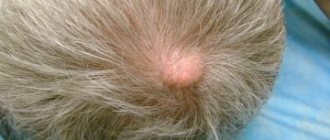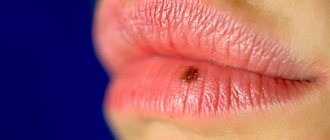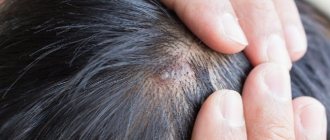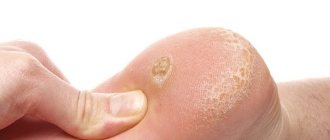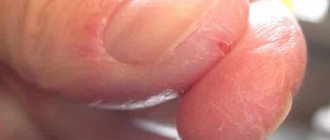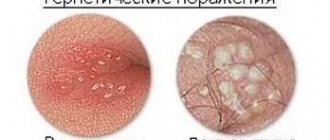Problem
It is very unpleasant when any formation, tumor, wen, lump or infiltration, etc. appears on the body. You always want to figure it out and decide what you have as quickly as possible. One of these formations may be atheroma.
To understand whether you really have it and what to do with it, you need to answer a number of questions.
- What is atheroma?
- What are they?
- Reasons for appearance?
- How to distinguish them from other formations?
- How to cure atheroma?
- Where to treat?
- Where to operate?
- What are the complications and consequences?
In our article we will answer your questions.
Treatment of education
Since atheroma is a cyst consisting of a dense shell of the epithelium, inside of which there is a pasty substance made from a mixture of sebaceous secretions and particles of keratinized epithelium, attempts to resolve it with folk remedies or squeeze it out without surgical intervention will not be successful. Opening at home is unsafe and can lead to inflammation and suppuration of the tissue area where the atheroma was located. a doctor should deal with this problem in a hospital or operating room.
Before the operation, the specialist must finally make sure that he is dealing with atheroma and not lipoma or fibroma. To do this, it is carefully examined and palpated. In some cases, it is advisable to do a biopsy of its contents; in especially severe cases, when there is suspicion of heterogeneity, an ultrasound is performed. Only after all these measures can you begin removal.
Removal methods
There are several ways to remove scalp atheroma:
- surgically;
- using a laser;
- radio wave method.
When removing scalp atheroma in the traditional way, you first need to remove hair from the area where the operation will take place.
Then, under local anesthesia, an incision is made in the upper part of the atheroma , the contents along with the capsule are removed.
The place where she was located is thoroughly cleaned. Drainage tubes are then inserted into the wound and several stitches are placed. Then the drainage is removed, the wound heals completely. But this method is considered unreliable, since there is a risk of re-formation of atheroma due to poor cleaning of the place where it was originally located.
Small tumors no larger than 2 cm in diameter are removed with a laser, regardless of whether there is suppuration or not. To do this, under local anesthesia, the neoplasm is opened with a scalpel, the contents are removed, but the membrane is not touched. The wound is expanded and the membrane is evaporated using a laser, then drainage tubes are inserted into the resulting void to remove excess fluid. A bandage is applied for 1-2 weeks, then the tube is removed and after some time the wound heals, leaving behind a small scar.
The radio wave removal method removes only small cysts. During this procedure, using special equipment, the tissue surrounding the atheroma is killed in a targeted manner. As a result, it disappears, and a small crust forms in its place.
Currently, it is reasonable to choose the latter method of removal, since it is painless, quick (the operation lasts no more than 30 minutes), does not require hair removal, and there are no scars. Disadvantage: does not allow removing large atheromas.
What's in it?
It is filled with accumulated gland secretions (secretion), pasty, mushy or cheesy atheromatous masses (detritus, keratinized epidermal cells, drops of fat, cholesterol crystals, necrotic tissue and decay products). Typically, the contents of the cyst are whitish or yellowish in color and often have an unpleasant odor. The color may change with suppuration. Education increases gradually in most cases. The gland, even if clogged, does not stop producing sebaceous secretions inside the cyst.
How to recognize the disease
The formation of atheroma is accompanied by scant clinical symptoms. A bulge appears on the scalp, clearly defined, painless, with a dense consistency to the touch. It gradually increases in size, but does not cause discomfort to the patient. In the center of the bulge, a black dot is visible - the opening of the excretory duct of the sebaceous gland. Education is characterized by relative mobility.
If the atheroma becomes inflamed, the following symptoms appear:
- pain when pressing;
- redness of the skin in the area of the tumor;
- release of contents with a pungent odor;
- a noticeable increase in the size of the cyst over a few days;
- increase in body temperature.
Removal of atheroma
Surgical treatment is planned or urgent (emergency). Most operations for atheroma can be performed on an outpatient basis without hospitalization. Larger lesions may require hospital treatment.
Planned surgery
The main method and best option for treating atheroma is planned surgery during a period when there are no complications. In our clinic we perform interventions under local anesthesia.
We make a linear incision or two bordering ones over the tumor. Tissue dissection is performed with a scalpel or radio wave knife Surgitron (Surgitron). The edges of the skin over the formation during the bordering version of the incision are captured with surgical clamps. With linear this is not necessary. We isolate (hustle) the wen from the surrounding tissues. During the operation, we remove not only the contents, but also the capsule of the atheroma. This is necessary to eliminate the risk of relapse.
We perform the operation on the head, freeing no more than 1-2 cm of hair from the skin above the cyst. After surgery, this area is easily covered by surrounding hair.
After excision of the formation and sanitation of the wound, we apply neat sutures. We use thin atraumatic threads.
We close the sutured wound with a modern aseptic dressing with an absorbent pad.
For small incisions on the scalp, leave the seams open.
Emergency or urgent surgery
Emergency or urgent surgical treatment is necessary for complications of atheroma. In case of suppuration and formation of an abscess, we make a linear incision in the projection of the formation. Then we remove the purulent contents and atheromatous masses. Then we wash and drain the postoperative wound. We try to remove the atheroma completely with the capsule (shell). If this is not possible, the wound defect is left open. The postoperative wound is cleaned and then heals by secondary intention. If a relapse occurs, due to capsule remnants or for no apparent reason, it will be possible to perform a planned operation in the cold period. Typically, such interventions should be done no earlier than 3 months after all inflammatory phenomena have completely subsided.
Causes
The reason for the development of pathology is a disruption of the sebaceous glands, which leads to the production of large amounts of skin secretion. This disease mainly affects people with excessive sweating, acne or seborrhea.
Factors influencing the formation of atheroma:
- heredity;
- thyroid diseases;
- inflammation of the scalp;
- metabolic disorders;
- unfavorable living conditions;
- scalp injuries;
- non-compliance with skin hygiene;
- consuming large amounts of animal fats;
- depression and nervous breakdowns.
The formation of an epidermal cyst is caused by pathological changes in the sebaceous secretion, which becomes denser and cannot exit through the ducts of the sebaceous gland.
Folk recipes
Many patients prefer alternative medicine. You can use proven folk recipes only at the initial stage of the disease. The most effective in this case are:
- Aloe juice. Three times a day, apply a cotton swab to the affected area of the skin, which is pre-moistened in the juice of the plant. The duration of treatment is at least 20 days.
- Films from chicken eggs. This recipe is one of the most popular, as you can find many positive reviews on the Internet. To achieve the desired result, you need to hard-boil a chicken egg, peel it and remove a thin film. It needs to be applied to the growth daily. After a few days, the atheroma will begin to resolve.
- Lamb fat. This product should be used with caution, avoiding healthy areas of skin. Pre-melted lamb fat should be cooled to room temperature. The product is applied to the formation six times a day. The duration of treatment is 7-15 days.
- Vegetable oil and garlic juice. For each procedure, you need to prepare a fresh mixture (a teaspoon of vegetable oil and 1-2 drops of juice).
You should always remember that in the absence of quality therapy and the use of questionable recipes, inflammation of the affected area may develop. In advanced cases, several cysts form on the skin at once. The pathology is accompanied by painful sensations and a long period of postoperative recovery.
Useful tips
In order to defeat a tumor that is constantly growing, it is important to follow the following rules:
- If you find a wen on your head, you should not self-medicate. You need to seek help from doctors and find out with them the reason for its appearance.
- After each wash and bath, it is useful to thoroughly rub your temples and the area behind the ears with a towel. It is in these places that excess fat accumulates, which can give impetus to the formation of atheroma.
- Doctors tend to assume that poor nutrition plays a major role in the formation of any benign tumors. If a benign lump has grown on your head, you need to pay attention to the functioning of the gastrointestinal tract, get examined, treat existing pathologies and completely change your diet.
- It is useful to carefully monitor the hygiene of the scalp, washing it only with gentle shampoos that contain extracts of medicinal herbs.
- Massaging the skin near the tumor is strictly prohibited.
- Hair dyeing and perm are also contraindicated. You should also avoid using masks for your scalp.
- In summer, your head must be covered with a hat. Sun rays and overheating of the skin can trigger the growth of the lump.
A course of application of keratolytics (Klenzit gel) can prevent the appearance of wen. The substances included in its composition prevent blockage of the ducts of the sebaceous glands and ensure normal sebum secretion. Eliminating the causes of atheroma formation allows for specific prevention of the disease. The duration of the course of treatment is a month, it must be renewed quarterly.
Atheroma on the head: removal from the scalp, causes, treatment
Atheroma of the scalp is a tumor-like formation. This is a cyst formed when the duct of the sebaceous gland is blocked. Atheroma looks like a dense growth and can be of different sizes. Inside the cyst there is a viscous liquid of dark yellow color, with a cheesy consistency. Atheroma develops most often on the head, sometimes localized on the shoulders and back.
Classification
Atheroma belongs to the cystic neoplasms of the skin. A cyst is a cavity with a capsule, which is its shell, and internal contents. In the case of an epidermal neoplasm, it forms in the sebaceous ducts of the gland, closing them, limiting the release of sebum.
The modern name for atheroma is epidermal (epidermoid) cyst.
Epidermal cysts are divided into four types:
- sebaceous gland cyst;
- dermoid;
- steacytoma;
- atheromatosis.
This division is important only for scientific research, since the clinical symptoms are the same for all atheromas.
Medical practitioners use a classification that divides epidermal cysts into congenital and acquired.
Symptoms and diagnosis of atheroma of the scalp
The development of atheroma occurs without visible symptoms. The cyst becomes noticeable only when it reaches a large size. It resembles a bump on the head, which has smooth contours and does not change the color of the skin.
Upon palpation (feeling), the neoplasm does not change location, although it remains mobile. Sometimes the areas of skin where the tumor has formed may become bald. A cyst on the head can open on its own.
The contents that come out have a dirty yellow color and an unpleasant odor.
An accurate diagnosis is established after laboratory analysis of the contents of the tumor.
To clarify the diagnosis, the doctor prescribes a histological examination of the contents of the cyst.
Atheroma on the head in children
Atheroma on the head of a child is a dotted white formation that does not differ in symptoms from adults. Most often, this is a congenital pathology, which is formed due to the production of large amounts of sebum. Inflammation may occur around the atheroma and resolve on its own. If suppuration occurs, the attending physician prescribes the use of antiseptics and antibiotics.
Congenital epidermal cysts in children do not require treatment until they are two years old. The tumor does not cause discomfort to the child, so only monitoring of the development of the tumor is carried out.
Factors provoking the development of atheroma in children:
- improper use of cosmetics, powders;
- heavy sweating;
- thermoregulation failures;
- skin damage;
- prickly heat.
If an epidermal cyst is detected in a child, there is no need to resort to self-medication or try to squeeze out the contents of the tumor on your own. This can provoke inflammatory and purulent processes.
How to recognize the disease
The formation of atheroma is accompanied by scant clinical symptoms. A bulge appears on the scalp, clearly defined, painless, with a dense consistency to the touch.
It gradually increases in size, but does not cause discomfort to the patient. In the center of the bulge, a black dot is visible - the opening of the excretory duct of the sebaceous gland.
Education is characterized by relative mobility.
If the atheroma becomes inflamed, the following symptoms appear:
- pain when pressing;
- redness of the skin in the area of the tumor;
- release of contents with a pungent odor;
- a noticeable increase in the size of the cyst over a few days;
- increase in body temperature.
Causes
The reason for the development of pathology is a disruption of the sebaceous glands, which leads to the production of large amounts of skin secretion. This disease mainly affects people with excessive sweating, acne or seborrhea.
Factors influencing the formation of atheroma:
- heredity;
- thyroid diseases;
- inflammation of the scalp;
- metabolic disorders;
- unfavorable living conditions;
- scalp injuries;
- non-compliance with skin hygiene;
- consuming large amounts of animal fats;
- depression and nervous breakdowns.
The formation of an epidermal cyst is caused by pathological changes in the sebaceous secretion, which becomes denser and cannot exit through the ducts of the sebaceous gland.
Treatment
Radical treatment of atheroma is only surgical. If the cyst suppurates, surgery is required.
Removal of atheroma on the head is possible in the following ways:
- Laser removal. The method is used in the early stages of cyst formation. To do this, the tumor is cut and the cavity is treated with a laser. The advantage is rapid wound healing.
- Radio wave method. Under the influence of radio waves of a certain frequency, the tumor is removed. No stitches needed; the risk of tumor recurrence is minimal.
- Traditional surgical removal. The method is used to remove epidermal cysts of various sizes and degrees of neglect.
In most cases, atheroma is removed surgically. The surgical intervention is performed under local anesthesia. The doctor makes an incision over the tumor, removes the cyst along with the capsule and part of the skin associated with the tumor. Afterwards, sutures are placed on the incision, which are removed ten days after the intervention.
Treatment with ointments
Ointments and balms are used to treat atheroma at home. The most popular of them are Vishnevsky ointment and ichthyol ointment. It is advisable to apply the ointment at night, applying a small amount to a cotton swab, which is fixed with an adhesive plaster.
The use of ointments is carried out at the first signs of neoplasm. Treatment lasts until the capsule dissolves or spontaneously opens.
Traditional methods
You can get rid of atheroma without surgery using traditional methods. For this, herbal preparations are used: ointments, juice, tinctures.
Folk remedies for the treatment of cysts:
- Aloe juice. Used to eliminate wen behind the ears.
- Lamb fat. Used melted and cooled.
- Burdock root mixed with fat.
- Egg film.
- Peony root decoction.
- Wheat germ juice.
- Watercress juice.
- Baked onions with soap.
- A decoction of coltsfoot leaves.
It should be remembered that it is prohibited to remove or squeeze out the atheroma yourself. If suppuration occurs or a sharp increase in tumor size, you should definitely consult a doctor.
Prevention measures
To avoid the appearance of atheroma on the head, you need to adhere to certain nutritional rules. Minimize your intake of fatty, sugary foods and increase your fiber intake.
Adhere to a healthy lifestyle, walk more in the fresh air and carry out healing procedures for the whole body. The main rule is personal hygiene and regular deep cleansing of the skin.
You also need to avoid direct sunlight and use properly selected cosmetics.
Patient Reminder
After removing atheroma on the head, you need to follow certain recommendations:
- You can wash your hair after removing atheroma using the surgical method after two days.
- Wipe the areas behind the ears thoroughly. This is where fatty secretions accumulate.
- Avoid massage and friction at the tumor site.
- Use baby soap.
- During the recovery process, you can wash your hair daily.
- To prevent the recurrence of atheroma, it is recommended to use special preparations that ensure normal secretion of sebaceous secretions.
Conclusion
Atheroma of the scalp is a cyst, a benign tumor-like formation. It is a cosmetic defect and can be removed at the request of the patient. However, the development of complications in the form of suppuration requires surgical intervention. Spontaneous opening of a suppurating atheroma can lead to the development of phlegmon or intracranial abscess.
Source: https://MedOnco.ru/rak-golovy/ateroma-na-golove
Short description
According to the mechanism of formation and histological structure, atheroma is a classic cystic neoplasm. Its characteristic feature is that it is formed from sebaceous gland cells designed to produce sebum. The tumor is enclosed in a special capsule, inside which, over time, a thick mass of dirty yellow color with an unpleasant odor accumulates.
Studies have shown that such a substance consists of standard epithelial cells, keratinized tissue, sebaceous secretions, cholesterol and other substances that are continuously produced by the inner lining of the cyst. Since the contents cannot independently leave the capsule, as the tumor grows it can reach impressive sizes.
Doctors note that atheroma develops quite slowly. It can be either single or multiple. Only a specialist can determine whether this disease is congenital or acquired.
In the first case, the cyst is formed from small cells of the epidermis, which is why it can remain unchanged throughout a person’s life. Acquired growths appear on the body as a result of exposure to unfavorable factors.
What to do if atheroma occurs
Atheroma is a benign neoplasm. It is formed when the sebaceous duct is blocked and is filled with fatty secretion including epithelial cells. In a calm state, apart from a cosmetic defect, it does not bring suffering to its owner.
What to do if a growth has formed? The answer is simple - consult a dermatologist or surgeon. The doctor must confirm the diagnosis of “wen” and differentiate the neoplasm from carcinoma, distant metastasis or cyst.
The peculiarity of the formation is that it practically does not respond to conservative treatment; its removal is carried out in 99% of cases.
If it is small in size and lacks cosmetic and household inconveniences, the doctor may suggest choosing a wait-and-see approach and observing the behavior of the tumor.
If the lump has reached a significant size, has become inflamed and suppuration has begun, then the atheroma will have to be opened, followed by drainage of the sebaceous gland cavity.
Symptomatic picture
In a normal course, when there is no infection by microorganisms, the formation does not bother the person in any way. Upon careful examination, a yellow-pink color will be visible, but when pressed, a person will not feel anything.
When the color of the atheroma changes to dark red or brown, the formation will be accompanied by symptoms such as pain, inflammation of the tissue around the formation, and also if there is a large amount of pus inside the tissue, the tissue may not be able to withstand, so some of the contents come out.
Types of atheroma
Taking into account the cellular structure of atheromas, there are:
- epidermal - cysts form on any part of the body;
- follicular - atheromas formed in the hair growth area;
Regardless of their structure, all types of cysts present with similar clinical signs and are treated in the same way. Such neoplasms are not dangerous, but they look unsightly and can become inflamed and painful. The only correct solution is to remove the atheroma surgically. This method is considered the most effective.
What is inside the atheroma
In the normal course of the disease, inside the formation there is a thick mass of gray-yellow color. When analyzing the contents under a microscope, you can find particles of squamous epithelium, fat, skin and tissue.
If an infection penetrates inside, the contents of the atheroma acquire a brown tint, which indicates an active inflammatory process.
Should I delete
Absolute indications for surgical intervention:
- obvious cosmetic defect;
- inflammatory process and suppuration;
- if the tumor is located in the area of large vessels or lymph nodes;
- complication – abscess or phlegmon of nearby tissues.
Any surgical intervention is performed according to indications, and not for sporting interest. Including surgery to remove atheroma.
The operation to remove the growth lasts on average from 30 to 40 minutes, including anesthesia and suturing. This is a “one-day” operation that does not require hospitalization and a long recovery period.
Features of the procedure
It is not recommended to eat or drink 3-4 hours before the procedure to avoid aspiration of vomit, for example, in case of an allergic reaction to drugs used for anesthesia. Also, if possible, the procedure can be postponed until colder weather arrives, since in hot weather the risk of infection of the postoperative wound and the development of complications increases.
After the procedure, the doctor tells the patient what needs to be done after removing the atheroma, when you can wash your hair and how to protect yourself from the formation of such tumors. But in any case, washing your hair is strictly prohibited until the stitches are removed and the wound has completely healed. Because the risk of wound contamination by microorganisms increases to 95%.
Symptoms
At first, the pathology has no symptoms, and a typical clinical picture emerges only when the atheroma on the head reaches a significant size.
Characteristic signs of an epidermal cyst:
- a compaction is felt in the hair, the size of which can vary;
- the formation has clear boundaries and looks like a ball or lump;
- hair begins to fall out at the site of atheroma;
- to the touch the formation is a soft and pliable tumor;
- the cyst is mobile, but does not move from its location, since it is fused to the skin;
- the surface of the atheroma is smooth, the skin around it is no different from the surrounding one.
The formation on the head can spontaneously open. In this case, foul-smelling contents begin to be released from the hole in the cyst shell - a fatty, thick, yellow-brown secretion, reminiscent of cottage cheese in consistency.
Atheromas are dangerous due to the likelihood of suppuration. In this case, the inflammatory process develops rapidly, with signs of intoxication: pain appears, body temperature rises, and everything can end in a subcutaneous abscess. Swelling appears around the inflamed atheroma, and the skin becomes hyperemic (reddened).
If the “abscess” opens out and the contents of the capsule flow out, the person’s condition noticeably improves.
In severe situations, when a cyst opens under the skin, all the symptoms of an abscess and intoxication appear. The patient
- your health suddenly deteriorates;
- headache;
- pressure drops;
- fever develops and the temperature rises.
Medical assistance must be immediate, otherwise complications are inevitable. Atheromas that have developed on the head should be removed in a timely manner, since a large cyst puts pressure on blood vessels and causes constant pain. But atheroma that occurs in the back of the head may well cause vision impairment.
If such a formation appears on the baby’s head, do not delay contacting a doctor and undergoing surgery: the child may accidentally scratch or otherwise damage the “bump” and cause an infection there. To avoid inflammation and other dangerous complications, you should get rid of atheroma as soon as possible.
